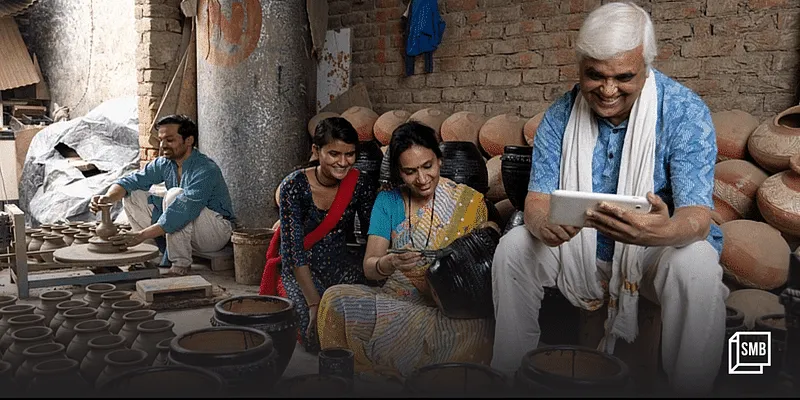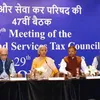5 years of GST: Decoding GST 1.0 and what Version 2.0 means for small businesses
Five years down the line, GST has had many hits and some misses, and has brought about a paradigm shift in the use of technology to bring about tax compliance.
Said to be India's biggest tax reform, the Goods and Services Tax (GST) was implemented five years ago with one agenda: ‘‘One nation, one market, one tax.”
The four-rate structure aimed to eliminate the cascading effect of multiple taxes as it subsumed various taxes such as VAT, sales tax, entertainment tax, service tax and more, which amounted to 31 percent as tax payable on an average for a consumer.
Five years down the line, GST has had many hits and some misses, and also brought about a paradigm shift in the use of technology to bring about tax compliance and making over Rs 1 lakh crore revenue collection every month 'a new normal'.
On the fifth anniversary, the Central Board of Indirect Taxes and Customs (CBIC) tweeted, “GST subsumed multiple levies and cesses, reduced compliance burden, removed regional imbalances and inter-state barriers, and significantly increased the transparency and overall revenue collection.”
The collections had touched a record Rs 1.68 lakh crore in April 2022. It had, for the first time, crossed the Rs 1 lakh crore mark in collections in April 2018. The total GST collection for the month of June 2022 was Rs 1.4 lakh crore.
The first leg of the GST regime came to an end just days before the GST Council announced the revised rates for several commodities.
Five years after the tax came into effect, SMBStory looks at the years that went by and what the road for Indian micro, small, and medium enterprises (MSMEs) looks like with GST 2.0.

The last five years
India has about 6.3 crore MSMEs that contribute about 30 percent to the country’s GDP. Of these, 88 lakh have registered on the Udyam Registration Portal.
Industry stakeholders believe GST has been a catalyst in tackling some of the woes of this sector.
For instance, small businesses have always found it challenging to manage cash flows and get access to credit.
Archit Gupta, CEO, and Founder of Clear (formerly ), believes that a lot of MSMEs have benefited by jumping on to the GST bandwagon.
“Their ability to transact with customers has improved. They are also able to pass on the credit to their customers. Since buyers and customers are interacting with each other, it has increased the overall level of compliance,” he said.
He said GST has helped MSMEs in improving their compliance, securing financing, and improved dealings between large companies and MSMEs, adding that a survey conducted by Clear revealed that large companies now prefer to work with suppliers who have a GST number.
Generating invoices electronically has been a big game-changer. GST has been helpful, but it has not come without its fair set of challenges.
Archit says many organisations file GST returns, but their suppliers don’t, which becomes a glaring issue.
Pooja Chaudhary, Founder of Rajasthan-based fashion brand Lavanya, is also of the same opinion. Online payments make it easier to maintain books of accounts and subsequently file GST every month. She finds operating the GST portal a simple task but not everyone does.
SMBStory spoke to a couple of entrepreneurs who said they find the portal “cumbersome” and “tedious” to operate.
Bimal Jain, Chair, Indirect Taxes Committee, PHD Chamber of Commerce and Industry, said India’s small businesses need hand-holding in understanding the tax regime better. “They are not tax experts and truth be told, even tax experts are struggling to understand GST.”
He added that changes in the portal like automation will be required as they are “dealing with data that is highly voluminous”.
The road ahead
The GST council has met 47 times so far. In its 47th meeting held in Chandigarh a few days ago, the council announced revised rates for some household items. Notable revisions include:
- Pre-packed and labelled food items such as meat, fish, curd, paneer, and honey will now attract 5 percent GST.
- An 18 percent GST will be levied on the fee charged by banks for the issue of cheques (loose or in book form).
- Maps and charts, including atlases, will attract 12 percent GST.
- A 12 percent tax on hotel rooms below Rs 1,000 per day will be levied, as against a tax exemption currently.
- Goods that are unpacked, unlabelled, and unbranded will continue to remain exempt from GST.
Bimal said raising GST rates is questionable at a time when inflation is at an all-time high of seven percent. Inflation apart, India is grappling with the repercussions of the ongoing Russia-Ukraine war and devaluation of the Indian rupee. Against this backdrop, he said he is worried that raising taxes on items would mean the burden being borne by the end consumer, which will lead to an imbalance in demand and supply.
However, a silver lining came in the form of an announcement by the council that businesses with an annual turnover up to Rs 40 lakh, and Rs 20 lakh turnover for goods and services conducting their transactions primarily through the ecommerce route, will be exempted from compulsory registration and will have the option to move to the composite scheme. This is expected to benefit around 1.2 lakh small businesses. The changes will tentatively be implemented from January 1, 2023.
Overall, Bimal says that the scenario is “neither good nor bad”. He said the government is doing everything to resolve the issues and must now set up a separate committee to look into the grievances of MSMEs that are struggling with the portal or have other queries.
Edited by Teja Lele





-with-the-team.png?mode=crop&crop=faces&ar=1%3A1&format=auto&w=1920&q=75)


